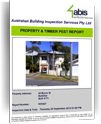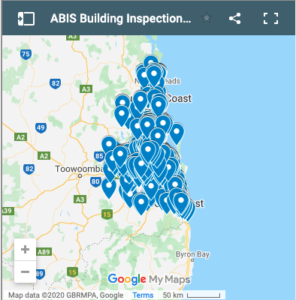Living in Queensland is beautiful one day, paradise the next. But there is a down side to all the high humidity and rainfall of tropical Queensland with its regular flooding and that’s water damage to our homes. Water may look benign but apart from structural defects, water is one of the major concerns of a building inspector, especially if water issues continue unaddressed within the home. Water itself can lead to substantial structural problems. Persistent moisture may also encourage timber pests, compromising the structure of your home and generally result in its devaluation.
Commonly misunderstood and underrated, water issues are significant, especially as they can mean expensive repairs down the track. The sad reality is that most of this misery is easily preventable with a little forethought and early preventative maintenance. So the best way to protect your most expensive asset is to make sure it is watertight from the very beginning and with a little ongoing maintenance keep it that way. This starts with a good building and pest inspection which not only identifies structural defects such as cracking but also details conditions conducive such as moisture which could lead to structural defects or timber pest activity and damage. Regular inspections should also be conducted on an annual basis to keep your home watertight.
Wet areas in your home are particularly vulnerable to water damage so particular attention is paid to inspection in kitchens, bathrooms and laundries. In the bathroom, damage to flooring and wall sheeting may be caused by poor or absent waterproofing whose application is guided by requirements of the Building Code. Leaking toilets, taps, and plumbing in general may result in water damage to floors and cabinets. Hobbs prevent showers leaking into the rest of the bathroom and floors need to be sloped appropriately to drains so that water is cleared away and not left standing.
In kitchens and laundries, an inspector will pay particular attention to inside cupboards, beneath shelving, and the skirting around the floor for signs of leaking with poor plumbing and overflows from sinks and dishwashers.
The state of the roof and its accessories is also vital in keeping a home watertight. Any corrosion and holes in metal roofing whether through rust or deterioration of fixings, any cracking or slippage of tiles and cracking or missing of their capping, deterioration or lack of flashings can mean leaking into the roof space, through insulation if any, onto ceilings. Poorly fitted and sealed vents, air conditioners, and skylights often leak, allowing rainwater ingress into the roof cavity. This can be exacerbated by flat roofs where there is a lack of slope to drain rainwater away. Similarly, poor fall on gutters can mean that rainwater ponds at low points and can flow into the roof space. Corroded and damaged gutters in a poor or missing state are just as problematic, particularly if downpipes are also corroded, blocked or missing as rainwater may accumulate around the base of the house destabilising its foundations and footings.
Windows and doors also provide access for rainwater ingress into a home particularly if poorly sealed, and without a weatherproof strip. Inappropriate use of materials e.g. timbers such as pine used externally or chipboard in bathrooms and kitchens and exposed to regular moisture, need to be kept well covered to prevent their succumbing to fungal decay and rot.
A good building inspector will be looking for signs of water ingress in the form of rusting and corrosion of metal roofing, staining, discolouration or even sagging of ceilings, cornices and skirting boards. Efflorescence a result of the powdery white salts left behind may be a symptom of moisture in a structure having drawn and deposited salts on the surface with drying. Timber regularly exposed to more than 17% moisture will encourage fungal growth and begin to decay, eventually rotting and collapsing. Persistent unaddressed moisture is important because of this damage, particularly to high risk structures such as stairs, decks and balconies. High moisture will also attract timber pests with their associated activity and damage.
Several pieces of equipment are also used in the process of detecting high moisture e.g. Moisture meters which register high moisture readings and thermal imaging cameras which show evidence of moisture via its cooler thermal patterns with evaporation. An inspector will also probe all exposed timbers to test for its soundness.
Regular building and pest inspections by qualified inspectors such as Australian Building Inspection Services are essential in targeting moisture problems early and preventing bigger, more expensive structural problems later with easy, preventative maintenance, saving yourself money and worry.




